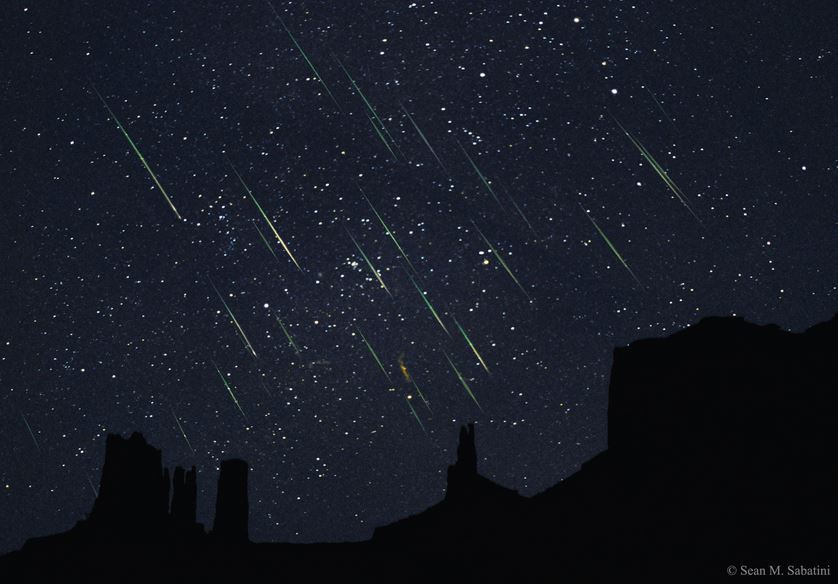December 2019 Sky
- Posted by OCastronomy
- On December 4, 2019
- 0 Comments
- Aldebaran, Annular Solar Eclipse, Antares, Beehive cluster M44, Castor, Geminid Meteor Shower, Mars, Pleiades, Pollux, Regulus, Saturn, Spica, Venus, Winter Solstice
December 2019 Sky
| 4 | First Quarter Moon at 6:58 UT. |
| 5 | Moon at apogee (farthest from Earth) at 4h UT (distance 404,446 km; angular size 29.5′). |
| 10 | Moon near the Pleiades (evening sky) at 19h UT. • The Pleiades (Wikipedia) |
| 11 | Venus 1.8° S of Saturn (30° from Sun, evening sky) at 10h UT. Mags. −4.0 and 0.6. |
| 11 | Moon near Aldebaran (evening sky) at 12h UT. • Aldebaran (Wikipedia) |
| 12 | Full Moon at 5:12 UT. • Full Moon Names (Wikipedia) |
| 13 | Moon at northernmost declination in year at 21h UT. Declination +23.23°. |
| 14 | Geminid Meteor Shower peaks at 12h UT. Produces bright, medium-speed meteors at its peak (up to 80 meteors/hour). Most reliable meteor shower. Easy to observe (radiant on sky map). Best after midnight. • Meteor Shower Calendar (IMO) • Geminids (NASA) • Geminids of the North (APOD) |
| 14 | Moon near Castor (morning sky) at 14h UT. |
| 14 | Moon near Pollux (morning sky) at 18h UT. |
| 15 | Moon near Beehive cluster M44 (morning sky) at 18h UT. |
| 17 | Moon near Regulus (morning sky) at 8h UT. • Regulus (Wikipedia) |
| 18 | Moon at perigee (closest to Earth) at 20:16 UT (370,265 km; angular size 32.3′). |
| 19 | Last Quarter Moon at 4:58 UT. |
| 21 | Moon near Spica (morning sky) at 4h UT. |
| 22 | December solstice at 4:21 UT. The time when the Sun reaches the point farthest south of the celestial equator marking the start of winter in the Northern Hemisphere and summer in the Southern Hemisphere. • December Solstice (Wikipedia) |
| 23 | Moon near Mars (morning sky) at 5h UT. Mag. 1.6. • Mars (Wikipedia) |
| 24 | Moon near Antares (morning sky) at 12h UT. • Antares (Wikipedia) |
| 26 | Annular Solar Eclipse from 3:34 to 7:01 UT. Greatest eclipse at 5:18 UT. The narrow path of annularity extends from Saudi Arabia to southern India, northern Sri Lanka, Sumatra, Singapore, Borneo and to Guam. Partial eclipse extends across Asia and northern Australia. • Annular Solar Eclipse of 2019 December 26 (GIF) (NASA) • Solar Eclipses: 2011 – 2030 (Mr Eclipse) • NASA Solar Eclipse Page (NASA) |
| 26 | New Moon at 5:13 UT. Start of lunation 1200. • Lunation Number (Wikipedia) |
| 27 | Moon near Saturn (15° from Sun, evening sky) at 13h UT. Mag. 0.6. • Saturn (Wikipedia) |
| 29 | Moon near Venus (34° from Sun, evening sky) at 3h UT. Mag. −4.0. • Venus (Wikipedia) |
| December 2019 Sky All times Universal Time (UT). | |


